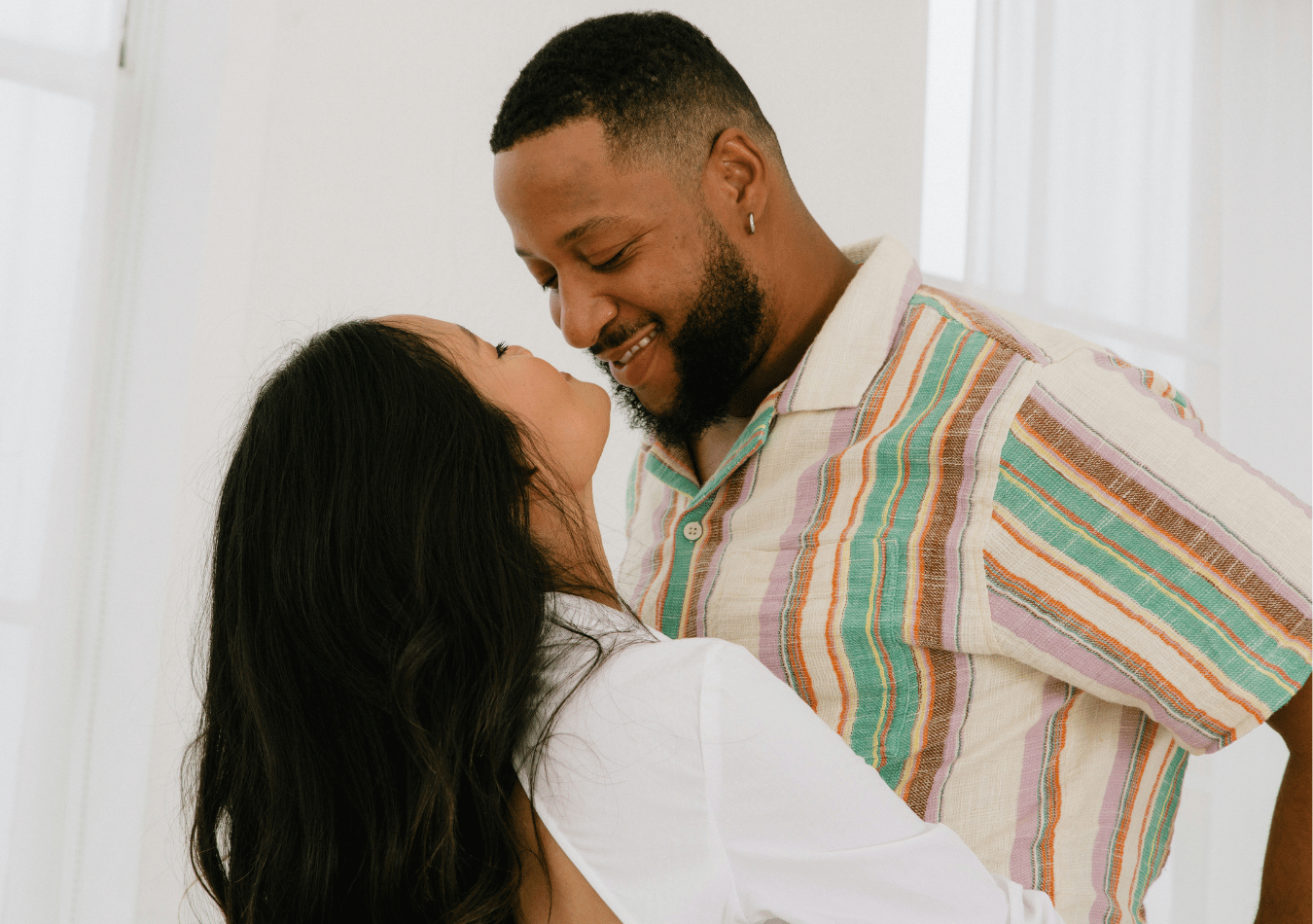A Therapist's Guide to an Anxious-Avoidant Relationship
Takeaway: If you’ve ever felt stuck in a relationship where one of you pulls away just as the other reaches out, you’re not alone—and you’re not broken. This guide offers a compassionate look at the anxious-avoidant dynamic, with insights and tools to help you move toward greater connection and security.
When Sarah came to therapy, she was emotionally exhausted and overwhelmed. Her relationship felt like a roller coaster - intense connection one moment, followed by silence and emotional distance the next. She often questioned her worth, while her partner seemed to pull away whenever things got too close displaying an insecure attachment. What Sarah didn't know was that she was caught in an anxious avoidant relationship, a dynamic that often feels deeply painful and strangely magnetic at the same time.
I'm a licensed psychotherapist specializing in attachment styles, trauma, relationship patterns with a variety of training including the Gottman Method, Psychodynamic Theory, and EMDR. I help individuals and couples understand the roots of their emotional struggles and build healthier, more secure connections.
In this post, we'll explore what an anxious avoidant relationship is, why it feels so intense, how each partner experiences it, and what it takes to make it work - or know when it's time to let go. If you've ever felt stuck in a confusing, up and down, or emotionally draining relationship, this is for you.
What is an anxious and avoidant relationship?
Attachment styles can make relationships be complex, especially when they clash. The old adage "opposites attract" is the perfect way to describe this type of relationship. One particularly challenging dynamic occurs between people with anxious attachment styles and avoidant attachment styles. Understanding this pattern and attachment theory is essential for recognizing unhealthy cycles and working toward more effective communication and emotional closeness.
An anxious avoidant relationship cycle often forms when one partner craves closeness and reassurance (the anxious partner), while the other feels overwhelmed by emotional intimacy and tends to withdraw (the avoidant person). This creates a push-pull dynamic where the more one partner seeks connection, the more the other retreats and wants emotional distance. Despite the emotional intensity, this pairing is common, often rooted in deep psychological patterns formed in early relationships with caregivers.
Common features of an anxious avoidant attachment style relationship include:
A cycle of pursuit and distancing, where one partner seeks closeness and the other backs away
Frequent misunderstandings and unmet emotional needs
The partner with the more anxious attachment style feeling insecure, overly needy, or constantly worried about the relationship
The partner with the avoidant attachment style (also known as fearful avoidant) feeling suffocated or pressured by emotional demands
Difficulty maintaining long-term emotional intimacy
Occasional intense highs (reunion or emotional connection) followed by emotional withdrawal or feel anxious
A pattern of conflict followed by disconnection rather than resolution
Despite the deep emotional pull, intimate relationships with these two attachment styles often leave both partners feeling unsatisfied. Recognizing these patterns is the first step toward change - either by working together to develop a secure attachment style or reevaluating the relationship's long term potential. While it may seem like a daunting task, it is possible to make an anxious avoidant relationship work, sometimes with the right additional support.
Why anxious and avoidant relationships feel so intense
Anxious and avoidant relationships often feel unusually intense, marked by emotional highs and lows that can be both exhilarating and exhausting. This intensity stems from the way each partner's insecure attachment styles activate the other's deepest insecurities and unmet emotional needs.
People with anxious attachment style crave closeness and constant reassurance, while avoidant partners tend to fear intimacy and seek independence. These opposing traits can create a magnetic pull - each partner unconsciously drawn to what feels familiar, even if it's emotionally dysregulating or feels uncomfortable. The anxious partner chases love, while the avoidant partner starts to distance themselves, reinforcing a cycle that keeps both hooked.
These attachment styles are often rooted in early trauma or inconsistent caregiving. The anxious partner may have experienced unpredictable love, leading them to fear abandonment and over-function in relationships. The avoidant partner may have learned to suppress emotions or self soothe due to emotionally unavailable caregivers. Together, they reenact old emotional wounds, mistaking the emotional roller coaster for passion or connection. This intensity, though compelling, is usually a sign of unresolved trauma playing out in adult relationships - not evidence of compatibility or lasting love.
What each partner might experience in an anxious-avoidant relationship
For the anxiously attached partner:
In an anxious-avoidant relationship, the anxiously attached romantic partner often feels emotionally unsteady. Their need for reassurance and closeness frequently goes unmet, leading to feelings of confusion, insecurity, and emotional distress. Even in the early stages, the anxious person may become preoccupied with the relationship, fearing abandonment or rejection and feeling like they can't understand attachment needs.
Common Thoughts/Feelings/Experiences the anxious attachment partner can experience include:
Anxious behaviors such as constantly overanalyzing texts, tone, or behavior for signs of disinterest
Feeling overwhelmed or "too needy" but unable to pull back emotionally
Trying harder to win love and approval when sensing distance
Feeling anxious, clingy, or desperate to fix the relationship
"Why won't they open up to me?"
Experiencing intense highs when receiving attention, followed by deep lows when ignored
Blaming themselves when things go wrong or communication breaks down
For the avoidantly attached partner:
Avoidant attachment individuals often struggle to maintain emotional closeness and may feel overwhelmed by their partner's need for connection. They value independence and may interpret emotional intimacy as pressure or a loss of personal space, which can lead to withdrawal.
Common Thoughts/Feelings/Experiences avoidant attachment individuals include:
"I need more space - I feel smothered"
Struggling to express emotions or understand their partner's behavior or emotional needs
Avoiding conflict or emotionally charged conversations
Feeling criticized or inadequate when their partner seeks more connection
Experiencing guilt for needing distance but not knowing how to change
Pulling away when things start to feel "too close"
Confusing intimacy with loss of autonomy or control
Can avoidant-anxious relationships work?
Yes, avoidant attachment relationships can work with intentional effort, self-awareness, and a strong commitment to growth from both partners. While the dynamic is inherently challenging due to opposing emotional needs, it's not impossible to build a healthier connection and feel emotionally safe.
Success in these relationships depends largely on both individuals' willingness to recognize and address their attachment styles and patterns. This often involves personal reflection, open communication, and a shared goal of emotional safety. Individual or couples therapy can be particularly helpful, offering tools to reframe reactions, regulate emotions, develop more secure attachment behaviors, and acknowledge one's own feelings in romantic relationships.
Key factors that influence success include:
The avoidant partner's ability to become more emotionally available
The anxious partner's capacity to self-soothe and respect boundaries
A mutual desire to understand and meet each other's needs
Building trust gradually through consistency and empathy
Practicing vulnerability and direct communication over time
With patience, accountability, and support, anxious and avoidant partners can shift out of reactive cycles and into a more secure, balanced, healthy relationship dynamic.
How to navigate an anxious-avoidant relationship
1. Understand Your Attachment Style
The first step in navigating an anxious-avoidant relationship is understanding your own attachment style. Are you someone who seeks constant reassurance and fears abandonment, or do you tend to pull away when things get too emotional? Recognizing your patterns helps you respond with awareness instead of reacting from old wounds.
2. Communicate Openly and Calmly
Open, honest communication is essential—but it needs to be delivered in a non-blaming, calm way. Anxious partners often need to express their feelings without overwhelming the avoidant partner, and avoidant partners must work on staying present instead of shutting down. Use “I” statements and focus on what you feel and need, not what the other person is doing wrong.
3. Respect Each Other’s Triggers and Needs
Both partners have valid emotional needs. The anxious partner may need reassurance, while the avoidant partner may need space. Learning to respect these differences without taking them personally can reduce conflict. Set boundaries that honor both closeness and autonomy.
4. Work Toward Secure Attachment
Both partners can begin to build secure behaviors: the anxious partner can practice self-soothing and trust-building, while the avoidant partner can lean into vulnerability and emotional expression. This takes time, but even small steps create lasting change.
5. Seek Professional Support
Therapy—whether individual or couples—can be incredibly helpful in breaking unhelpful cycles. A skilled therapist can help each partner explore their attachment wounds, relationship history, learn new tools, and create a more emotionally safe dynamic. A trained therapist can help both you and your partner to learn more about the four attachment styles, the attachment spectrum, and general principles of stable relationships. You don’t have to do this alone.
By approaching your relationship with intention, empathy, and consistent effort, it is possible to shift out of the anxious-avoidant trap and build a more balanced, secure connection.
When to let go
While anxious avoidant relationships can improve with effort, some dynamics may become too damaging to sustain. It's important to recognize when an unstable relationship is no longer serving your emotional well-being, especially if one or both partners are unwilling to grow or change.
Signs it may be time to let go:
Constant anxiety, insecurity, emotional distance or feel triggered
One partner refusing to acknowledge or work on attachment issues
Feeling stuck in a cycle of conflict without lasting progress
Repeated emotional withdrawal or silent treatment with no resolution
Lack of emotional intimacy, trust, or support
One or both partners consistently feeling unseen, unheard, or unloved within the emotional experience
Letting go can be painful, but staying in one relationship that continually harms your mental and emotional health can be even more damaging. Sometimes, the most loving choice is to walk away, self regulate, focus on healing, and self-growth.
Final thoughts
Navigating an avoidant and anxious relationship can be emotionally exhausting, but understanding the patterns behind them is the first step toward healing. In this post, we explored what defines this dynamic, why it feels so intense, how each partner typically experiences the relationship, and when it may be time to let go.
In my work as a psychotherapist, I once supported an avoidant and anxious attachment couple. The anxious partner felt constantly abandoned and confused why their partner wasn't making more of an effort for emotional intimacy whereas the avoidant one felt overwhelmed and criticized. Through therapy they learned to recognize each other's triggers, communicate openly, gradually shift toward secure attachment and develop a strong sense of closeness. With time and commitment, they rebuilt their connection on mutual trust and emotional safety. In addition to therapy, there are several books that can be helpful in understanding attachment styles.
If you're struggling avoidant and anxious attachment relationship - whether as a couple or individually - therapy can help you gain clarity, heal attachment wounds, and build healthier connections. I specialize in working with individuals and couples navigating attachment styles, trust issues, pre-marital conflicts, and breaking negative patterns. If you're ready to begin, feel free to book a free 30 minute phone or video consultation with me to see if we might be a good fit. I'd be honored to support you on your journey.



